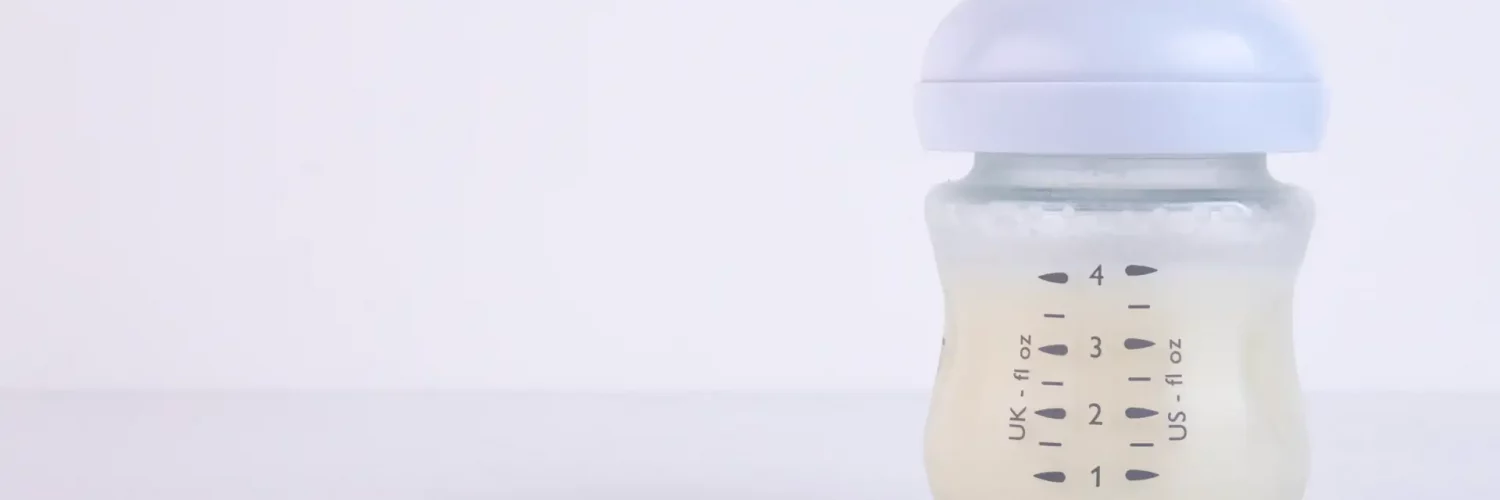Question:
Dear Rabbi Sprung,
May one feed an infant expressed breastmilk with a pinkish tinge from maternal bleeding (e.g., due to cracked nipples)? Is breastfeeding permitted in that situation?
Answer:
Consumption of human blood is only Asur mid’Rabbanan (Krisos 21band Rambam Ma’achalos Asuros 6:2). However, blood that has not come out of the body, such as blood between one’s teeth, may be sucked and swallowed. This is stated by the Gemara and codified by the Rambam (ibid.) and Shulchan Aruch (Y.D. 66:10).
Rashi explains (Kesubos 60a) that human blood is easily confused with animal blood. Chaza”l forbade the consumption of human blood to avoid the suspicion (Maris Ayin) that a person ate animal blood. Therefore, a person may suck blood from a wound in his mouth as it is not visible to others.
In other words, there is no inherent distinction according to Rashi between blood that has come out of the body and that which has not; it is merely a question of Maris Ayin.
The Acharonim question Rashi’s approach: An act forbidden due to Maris Ayin cannot be performed even in private (Shabbos 64b). If so, why may a person suck blood from his teeth simply because nobody can see it? Several answers are suggested:
- The Be’er Sheva[1] answers that Maris Ayin only applies in private when there is room to suspect that a person transgressed an Issur d’Oraisa. In our case, the only possible concernwould be a transgression of a d’Rabbanan.
However, the Acharonim are perplexed by this explanation. Surely, it may appear that he drank the blood of an animal which is Asur mid’Oraisa! (In his commentary on Kerisos, R’ Elyashiv zt”l proposes a great Chidush to resolve the Be’er Sheva’s approach.)
- The Sha’ar haMelech (Yom Tov 5:4) rejects the Be’er Sheva’s explanation. He explains instead that the issue of Maris Ayin is that one cannot rely on privacy to negate the concern. In this case, however, the “privacy” is guaranteed as the blood is inside his mouth where nobody else can see it at all. (This appears to be his intent.)
- We will propose a novel approach below, based on the Hafla’a.
According to the Be’er Sheva and Sha’ar haMelech, it would seem that if a mixture of milk and blood is in a bottle, there would indeed be a Chashash of Maris Ayin (suspicion that the baby is drinking animal milk mixed with animal blood – an Issur d’Oraisa). However, if the baby is nursing directly from its mother there would be no room for concern.
Tosfos assert (Kerisos ibid.) that the Issur of human blood only applies when it is not recognizable as such:
The statement that human blood is Asur only applies when the source [of the blood] is not known. However, if a person’s finger is dripping with blood, it is permissible since its source is known and there is no concern that it is the blood of an animal or beast.
In other words, there is no Issur when there is no concern of Maris Ayin.
The Hafla’a explains likewise (Kesubos ibid.):
It would seem that blood between the teeth is not the only Heter. It is similarly not prohibited to suck and swallow blood of a wound on one’s hand…since the reason [for the Heter] is that it is not visible, as Rashi states, implying that the only Issur is Maris Ayin and, in these cases, the blood is not seen. It is therefore dissimilar to something forbidden due to Maris Ayin which is forbidden even in private, since in this case when he sucks with his mouth, nobody sees the blood after it comes out and there is no concern for confusion. This applies to blood of all limbs and one may suck and swallow it for the same reason. This is indeed the implication of the expression [in the Gemara], “The opposite is true regarding blood” – implying that the case of blood is similar to sucking milk [i.e., even when it is not between the teeth but on a separate area of the body], thus here it is permissible in the same way. This requires further study.
Tosfos appear to be more lenient than the Hafla’a for they even permit blood that is dripping, whereas the Hafla’a only referred to sucking blood that has not yet come out. The Minchas Ya’akov[2] (cited by the Darchei Teshuva 66:68) makes a similar point, arguing that Tosfos argues with Rashi in permitting dripping blood. He also cites the Nachal Eshkol[3] who supports the Hafla’ah’sview. However, the Darchei Teshuva cites the K’neses haGedola[4] (Hagahos to Beis Yosef 52) in the name of the Damesek Eliezer who forbids sucking blood from one’s finger.
Returning to our questions: May an infant be fed bottled milk that contains some blood (and which has a pinkish color), and may the mother nurse it directly? In both cases, if an Issur d’Oraisa wereinvolved it would be forbidden, since one may not cause a child to transgress an Issur, even if he has not reached the age of Chinuch (Shulchan Aruch 343 and Mishna Berura). We would then need to discuss whether it would be permitted due to Pikuach Nefesh, for Chaza”l state: “An ordinary child is [considered] endangered with regard to milk.” Even though human milk alternatives are readily available nowadays, it would nevertheless come under discussion if the child were very young and is mainly nourished by the mother’s milk.
However, since human blood is only Asur mid’Rabbanan, it is permissible to feed the milk to a child in these cases since he is considered a Choleh (Shulchan Aruch ibid.). The Heter applies to both cases:
If the child is nursing directly, one may certainly rely on the Hafla’a who permits it. As mentioned, Tosfos are even more lenient than the Hafla’a. Even those who argued were only stringent in a case where one is clearly sucking blood, whereas a baby who is nursing looks like he is sucking milk. One can therefore argue that according to all opinions, there is no concernabout Maris Ayin (particularly given that there is no Issur mei’Ikar haDin). It is, however, preferable to clean off any visible blood before nursing.
In the case of expressed breastmilk mixed with blood, perhaps there is more concernthat it appears to contain animal blood. However, since the blood is mixed with breastmilk we may be lenient since the Rema (ibid.) rules that a person’s blood does not prohibit its Ta’aroves. The Pri Megadim (Sifsei Da’as 16) explains that the Issur of Maris Ayin does not apply to a Ta’aroves, even if the Issur constitutes the majority of the mixture. (Although one could contend that the pink color indicates the presence of blood and it is thus recognizable – it would seem that we need not draw this distinction.)
Therefore, l’Halacha, one should not have any concerns about feeding the child.
[1] R’ Yissachar Ber Eilenberg zt”l (1550-1623), Talmid of the Levush and Sm”a, Rav of communities in Italy and Prague.
[2] R’ Yaakov Reischer zt”l (c.1655-1733), Rav in Prague, Worms, and Metz. Author of Shvus Yaakov, Chok Yaakov, and Iyun Yaakov.
[3] R’ Tzvi Binyamin Auerbach zt”l (1808-1872). Rav in Hessen, Darmstadt, and Halberstadt, Germany. Author of Nachal Eshkol on the Sefer haEshkol.
[4] R’ Chaim Benevishti zt”l (1602-1673). Rav in Izmir, Turkey and author of the K’neses haGedola and Sheyarei K’neses haGedola on the Tur and Beis Yosef.










Add comment